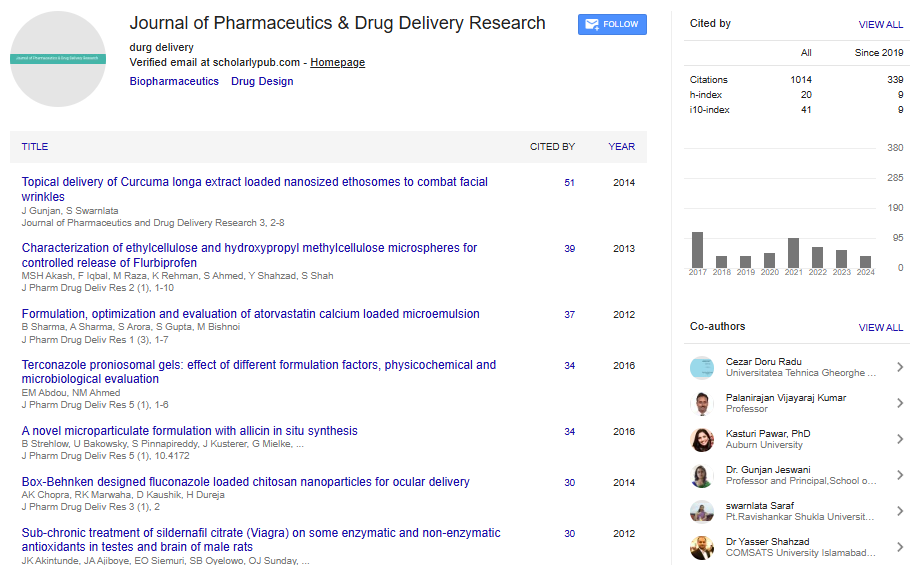Polymeric self-assemblies for photodynamic therapy: A critical approach
A Figarol, U Till, L Gibot, B Moukarzel, A F Mingotaud, C Mingotaud, P Vicendo, M P Rols, M Gaucher and F Violleau
IPBS-CNRS, France
University of Toulouse, France
: J Pharm Drug Deliv Res
Abstract
Statement of the Problem: The work presented here suggests a new approach in the critical development of polymeric nanovectors for Photo Dynamic Therapy (PDT) against cancer. Whereas hundreds of studies quickly jump forward from formation of selfassemblies to biological application without having a thorough examination of the vector solution, we suggest having a parallel assessment of formation/characterization of the nanovectors and their biological activity. This is possible by first conducting a careful physical chemistry characterization of the vectors by both batch techniques (light and neutron scattering, electron microscopy, atomic force microscopy) and Asymmetrical Flow Field-Flow Fractionation (AsFlFFF) coupled to adequate detectors (refractometry, light scattering). This enables us to fully characterize the vectors regarding purity, size and zeta potential. Methodology & Theoretical Orientation: Data on both polymeric micelles and polymersomes are presented here, using poly(ethyleneoxide-b-caprolactone), poly(ethyleneoxide-b-D,L-lactide) and poly(ethyleneoxide-b-styrene). Self-assemblies exhibiting size range of 20-200 nm are presented and revealed the possible presence of different populations of nanovectors in some cases. Controlled mixtures of different nano-objects are also studied, as well as crosslinked systems. Ability to carry a photosensitizer (Pheophorbide a) for PDT, is examined for each new vector. The activity in PDT both in 2D or 3D cell culture is presented and compared on different batches, in link with the purity analysis. Here again, it becomes highly recommended to develop a critical approach considering in vitro analyses, since different efficiencies are clearly observed depending on the vectors and the 2D or 3D culture type. Conclusion & Significance: This work shows that selected mixtures of different vectors with different morphologies or sizes may lead to synergetic effects. Also, a strong influence of the crosslinking of the vector has been observed and will be presented.
Biography
A Figarol has developed her expertise in nano-bio interactions since her MSc. She has done her thesis on Health and the Environment (Cranfield University, UK). Looking at the cellular impact of silica nanomaterials on keratinocytes, she already started to combine the different approaches of physical chemistry and biology relying on her technical background in Biology Engineering (Université de Technologie de Compiègne, France). She further enhanced her pluridisciplinary along her PhD exploring the impacts on physico-chemical characteristics of carbon nanotubes on macrophages (Ecole Nationale Supérieure des Mines de St-Etienne, France). Her confirmed enthusiasm for the dynamic and state-of-the-art field of nanobiology led her, after a year of discovery of the industrial strategy on toxicology, to join a collaborative project on polymeric nanovectors (IPBS and IMRCP laboratories from the Université Paul Sabatier de Toulouse, France).
Email: Agathe.Figarol@ipbs.fr
 Spanish
Spanish  Chinese
Chinese  Russian
Russian  German
German  French
French  Japanese
Japanese  Portuguese
Portuguese  Hindi
Hindi 
